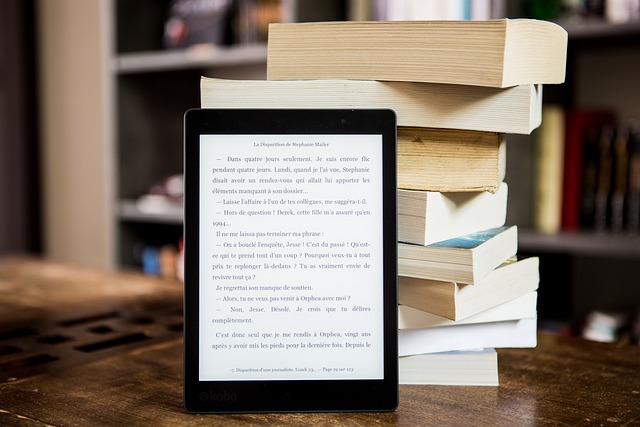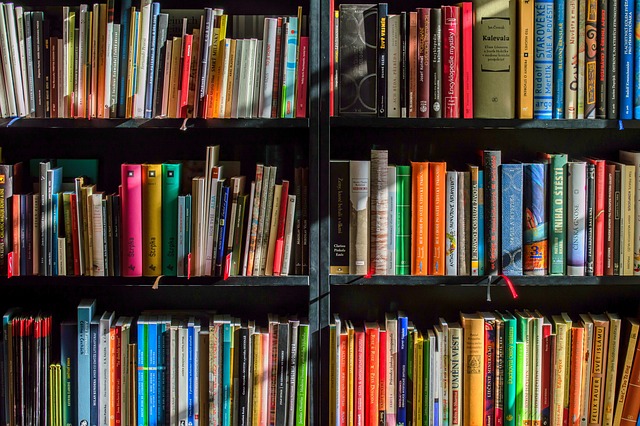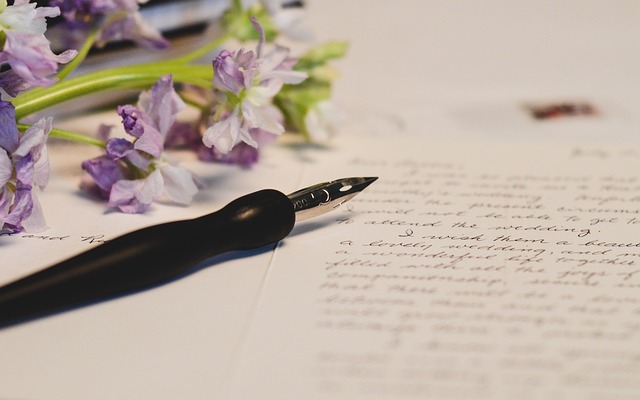Today’s blog is a little bit different. This entire blog is based on a very common but very important question that self-published authors ask.
The question is, “Are you a published author if you self-publish? The answer to this is quite simple and this blog can be over right now.
The answer to this is definitely yes.
It does not matter how you publish. If you have a published book then you are a legitimate author. This is not just something that is qualifiable technically but it is true in reality. In order to become an author, you need to have a published book and that is it.
And if you qualify for that condition then you are a published author which means if you self-published your book then you are definitely an author.
But this would make the blog too boring. Instead, we are going to tell you everything you need to know about traditional publishing and self-publishing. Let us start with the definitions.
WHAT IS SELF-PUBLISHING?
Self-publishing is when authors have complete control over the publishing process. It is when they do the book publishing independently without any traditional publishing houses.
This is different from traditional publishing as in traditional publishing the author has to submit their work and wait for it to be selected. That is not the case when it comes to self-publishing.
This means that authors can have complete control over what they write. The author in self-publishing is not just the author but also the publisher as well because they are investing in their self-published books.
The writing industry is slowly but surely moving towards self-publishing because of certain technical advantages.
There are more resource materials online at this point in history. These materials help new authors in understanding the entire book publishing process.
There are excellent formatting software and book cover designing software out there which will mean that they do not need the assistance of any traditional publishing house for all the technical stuff.
They can promote their author identity and do all the book marketing by themselves. Self-publishing has certainly given more power to the author in general and many people are more confident about their writing career because of self-publishing.
There is no concept of author royalties for the most part in self-publishing because the author is the publisher. Of course, the author can utilise a self-publishing company and they would still hold the largest percentage of author royalties.
WHAT IS TRADITIONAL PUBLISHING?
Traditional publishing is just the opposite of self-publishing. When we refer to the publishing industry, we usually refer to traditional publishing.
Among self-publishing vs. traditional publishing, traditional publishing is definitely the older cousin. It follows a structured model of publishing.
This is when authors submit their manuscripts and just wait for the traditional publishing company to review them. Once they do it, they invite the writer over for the rest of the formalities.
This may include things like making changes to the manuscript. It can also be going through another round of editing.
In the meanwhile, a contract is created and signed after royalties are discussed and agreed upon. The traditional publishing house does everything and the writer or the author has to simply submit their manuscript and agree on things.
That traditional publishing house does everything from the editing to the book cover design to the printing as well as the publishing of the book.
They exclusively do the marketing as well as the distribution and selling of the book.
The royalty structure is different when it comes to self-publishing and traditional publishing. In traditional publishing, since the publishing house does all the investment, they get to keep the bigger share of the profits.
Let us now compare self-publishing with traditional publishing so that you have a better idea about publishing in general.
SELF-PUBLISHING VS. TRADITIONAL PUBLISHING
· CONTROL
When it comes to control it is definitely self-publishing all the way. This is because self-publishing allows authors to have more control and even complete control over the publishing process.
They get to decide everything and they get to have all the creative control needed. There is no oversight over creative decisions. There is no request to change things in the manuscript.
When it comes to traditional publishing, the author does not have a lot of control. This is quite debatable because the more influential you are as an author the more power you have.
For example, if you are a best-selling author then you have more authority and control over the manuscript when it comes to traditional publishing.
If you are someone new and your manuscript has just been selected, then you cannot expect a lot of freedom and control over what you write.
That is why if you are alright with control given over to professionals then you can go with traditional publishing.
But if you are the kind of author who likes to have control over every aspect of publishing then you need to go for self-publishing.
· INVESTMENT
When we are talking about investment, the author does not need to invest anything when it comes to tensional publishing, apart from their hard work and time.
In traditional publishing the author simply has to write and submit the manuscript and the publishing house will take care of everything. They will take care of all the printing costs.
The publisher will also take care of all the professionals that are required in book publishing such as the cover art designer and the formatting expert etc.
They will take care of all the costs associated with marketing and much more.
Simply put, in traditional publishing the author does not have to spend anything from their pocket. Of course, there are hybrid models out there that allow the author to also become an investor but that is rare.
When we are talking about investment in self-publishing, the author is also the publisher. The author has to spend their own money when it comes to all the costs associated with publishing the book.
They have to bear all the costs associated with the publishing process thereby making them the biggest or the only investor in the book. They also get to keep most of the profits if not all the profits.
When it comes to self-publishing, the author can choose to publish the book with the help of traditional publishers or they can approach self-publishing platforms as well.
· CREDIBILITY AND RECOGNITION
Credibility and recognition are a very nuanced topic when it comes to self-publishing vs traditional publishing.
This is because if we had to write about this topic, let’s say 20 years ago, then we would have written something different.
Back when the internet was not a thing, it would have been very difficult to become a popular author without a popular publisher behind your name. That does not mean there haven’t been popular self-published authors before the internet, but they are rare.
Before the internet era, could not enter distribution circles and it would have been nearly impossible to become popular as an author. There is a fixed structure in the publishing industry where someone new can find it very difficult to enter.
But nowadays if you invest a lot of money, then there are self-publishing platforms that will do all the work for you. These platforms like Amazon already have established distribution channels.
That is why you can achieve credibility and recognition from both kinds of publishing techniques nowadays.
If you are going with traditional publishing then you know you already have the support as well as the distribution channels of an established publisher.
If you are going with self-publishing then you know that you can spend money on different platforms in order to promote your book and they will do the rest for you.
Now that we know a little bit about traditional publishing and self-publishing, let us answer a few common questions.
FAQ ABOUT SELF-PUBLISHING AND TRADITIONAL PUBLISHING
1. Is a self-published author considered a published author?
A self-published author is definitely an author. It is just that a self-published author has decided to publish their book independently rather than going with a traditional publisher.
A self-published author can work directly for their book and can control every aspect of the book and even publish it online themselves.
Online publishing has made it much easier because they can just create an eBook and that way do not even have to think about printing the book.
2. Are you an author if you publish an article?
Yes, you are an author if you have published an article. You are the author of the article. If you contribute your writing to a book or an article and if you have your name on that book as a contributor then you are an author.
There are no such specifications out there that will specify that only writers of a certain kind of book can call them some authors.
If you are a writer and you have your name as the writer of a book then you are a published author.
3. Do any famous authors self-publish?
There are certainly a lot of self-published authors that are quite famous. We have names like Margaret Atwood and Robert Kiyosaki who have always self-published their books.
We have Andy Weir, the author of The Martian, this is a novel whose adaptation went on to become one of the biggest Hollywood movies in the world.
We can’t miss names like Mark Twain and Beatrix Potter. Then there are names like Stephen King as well.
We can go on and on but the point is there are quite a few big names.
4. What is the disadvantage of self-publishing?
There are certainly a few disadvantages associated with self-publishing, one of the disadvantages is that the author also has to be good at marketing because that is very much necessary.
There is the issue of quality control since no professional publishing houses are moderating the content. Anyone can write anything and get it published.
There is the issue of investment because you need to spend money in order to get your book published and not all authors have that kind of money.
There is also the fact that the author has to do a lot of work rather than just concentrating on the writing part of the book.
We hope this blog has been helpful for you to understand everything you need to know about self-published authors. Along with that, we also hope that you now understand the difference between self-publishing and traditional publishing.
And if you are someone who wants to self-publish or traditionally published their manuscript then we are here for you.
We are Orange Publishers and we are the fastest-growing and most popular publishing company in India. We have the finest distribution channels along with the best structure for publishing any level of volume and any kind of book.
We do everything in-house at Orange Publishers, which means everything from the book cover design to the printing and publishing happens within the gates of Orange Publishers.
We welcome you to check out our services and we would love to get in touch with you and transform your manuscript into a bestseller.





